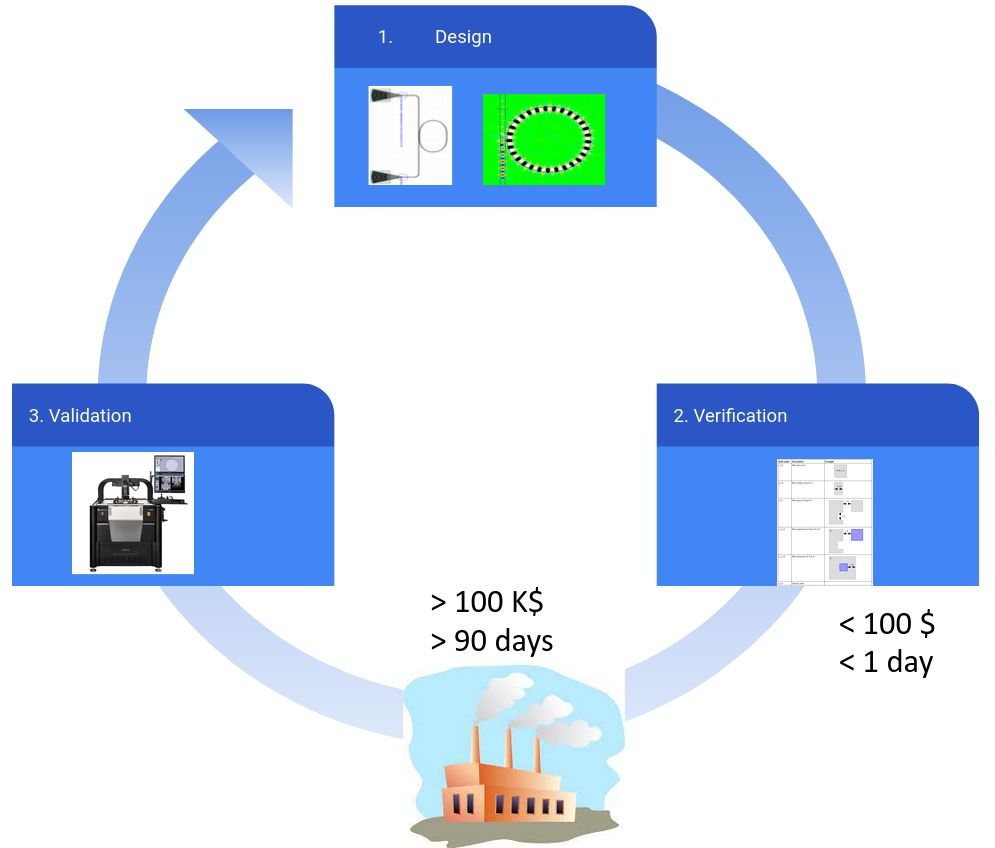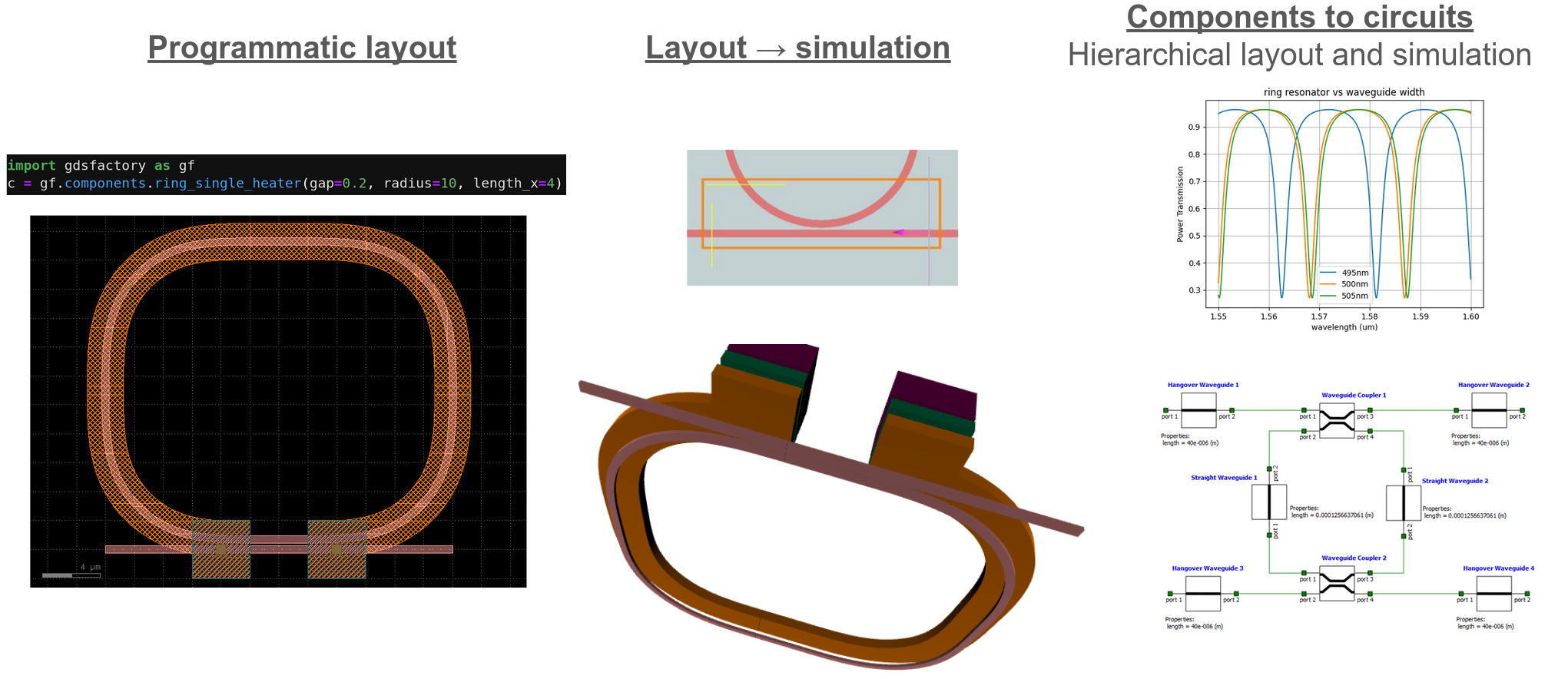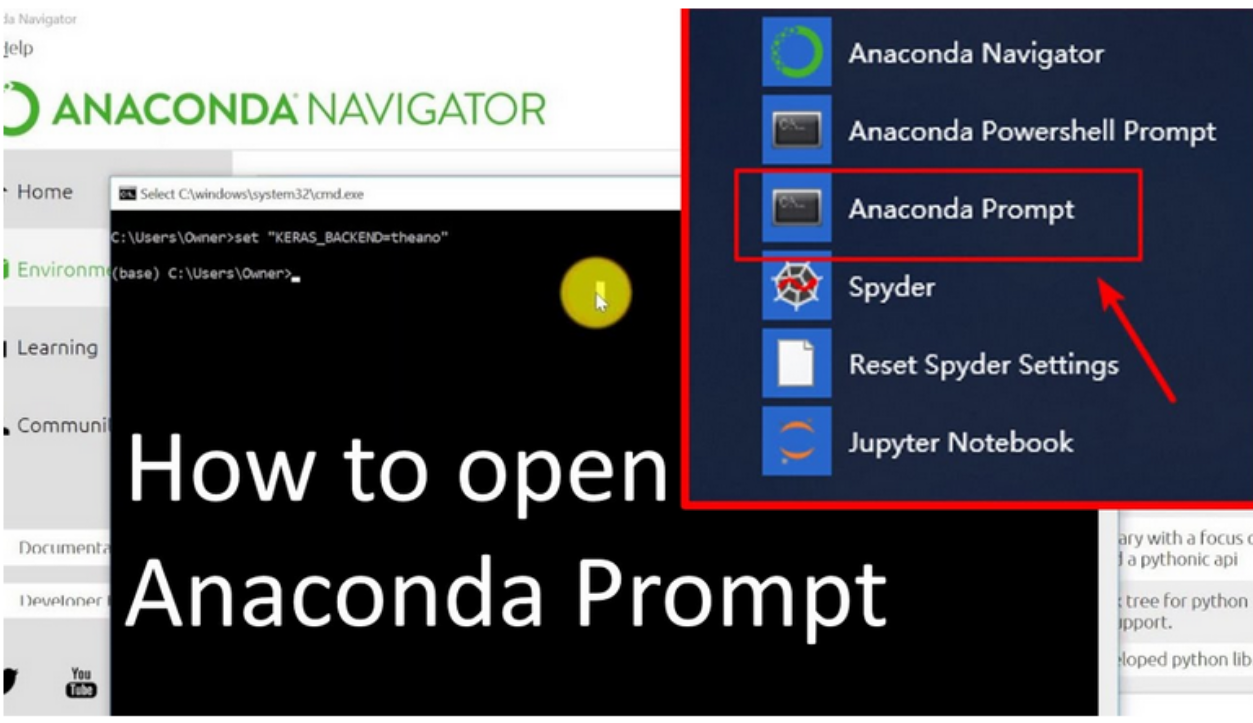python library to generate GDS layouts
Project description
gdsfactory 6.62.0
gdsfactory is a python library to design chips (Photonics, Analog, Quantum, MEMs, ...)
You can describe your circuits in code (python or YAML), verify them (DRC, simulation, extraction) and validate them (to make sure they meet the specifications after fabrication).
It provides you and end to end design flow to:
- Design (Layout, Simulation, Optimization)
- Define Components using parametric cells functions in python or YAML.
- Test component settings, ports and geometry to avoid unwanted regressions.
- Capture design intent in a schematic.
- Verify (DRC, DFM, LVS)
- Run simulations directly from the layout thanks to the simulation interfaces. No need to draw the geometry more than once.
- Run Component simulations (solve modes, FDTD, EME, TCAD, thermal ...)
- Run Circuit simulations from the Component netlist (Sparameters, Spice ...)
- Build Component models and study Design For Manufacturing.
- Create DRC rule decks in Klayout.
- Ensure complex layouts match their design intent (Layout Versus Schematic).
- Run simulations directly from the layout thanks to the simulation interfaces. No need to draw the geometry more than once.
- Validate
- Define layout and test protocols simultaneously, so when the chips come back you already know how to test and analyze them.
- Model extraction: extract the important parameters for each component.
- Build a data pipeline from raw data, to structured data and dashboards for monitoring your chip performance.
As input, you write python or YAML code.
As output you write a GDSII or OASIS file that you can send to your foundry for fabrication. It also exports component settings (for measurement and data analysis) and netlists (for circuit simulations) in YAML.
It provides you a common syntax for design (KLayout, gdstk, Ansys Lumerical, tidy3d, MEEP, MPB, DEVSIM, SAX, MEOW ...), verification and validation.
Multiple Photonic foundries have gdsfactory PDKs available. Talk to your foundry to access their gdsfactory PDK.
You can also access:
- instructions on how to build your own PDK
- instructions on how to import a PDK from a library of fixed GDS cells
- open source PDKs available on GitHub
Installation
You have 3 options to install gdsfactory:
1. Installation for new python users
If you don't have python installed on your system you can download the gdsfactory installer that includes python3, miniconda and all gdsfactory plugins.
2. Installation for new gdsfactory users
Once you have python installed, open Anaconda Prompt and then install the latest gdsfactory using pip.
pip install gdsfactory --upgrade
gf tool install
Then you need to restart Klayout to make sure you activate the klayout gdsfactory integration.
3. Installation for developers
For developers you need to fork the GitHub repository, git clone it (download it), git add, git commit, git push your improvement. Then pull request your changes to the main branch from the GitHub website.
For that you can install gdsfactory locally on your computer in -e edit mode.
git clone https://github.com/gdsfactory/gdsfactory.git
cd gdsfactory
pip install -e . pre-commit
pre-commit install
gf tool install
Update gdsfactory
- Users can
pip install gdsfactory --upgrade - Developers can
git pullon the repository you downloaded and installed on your computer.
Install gdsfactory plugins
You need to install the plugins separately
You can install most plugins with
pip install gdsfactory[full,gmsh,tidy3d,devsim,meow,database] --upgrade
Or you can install only the ones you need.
pip install gdsfactory[full]for 3D rendering.pip install gdsfactory[tidy3d]tidy3d plugin for FDTD simulations on the cloud.pip install gdsfactory[gmsh]for mesh plugins.pip install gdsfactory[devsim]for TCAD simulations.pip install gdsfactory[meow]for EME (Eigen Mode Expansion) simulations.mamba install pymeep=*=mpi_mpich_* -yfor open source FDTD MEEP simulations. Notice that it works for MacOS and Linux, so for Windows you need to use the WSL (Windows Subsystem for Linux).
Plugins
- Optimization
- Meshing
- Device Simulators
- Mode Solvers & Eigenmode Expansion (EME)
- Electromagnetic Wave Solvers using Finite Difference Time Domain (FDTD)
- S-Parameter Circuit Solvers
- Database
Docker container
Alternatively, one may use the pre-built Docker image from hub.docker.com/r/joamatab/gdsfactory or build it yourself with
docker build -t joamatab/gdsfactory .
For example, VS Code supports development inside a container, see Developing inside a Container for details.
Getting started
- Run notebooks on
- See slides
- Read docs
- See announcements on GitHub, google-groups or LinkedIn
Testimonals
"I've used gdsfactory since 2017 for all my chip tapeouts. I love that it is fast, easy to use, and easy to extend. It's the only tool that allows us to have an end-to-end chip design flow (design, verification and validation)."
"I've relied on gdsfactory for several tapeouts over the years. It's the only tool I've found that gives me the flexibility and scalability I need for a variety of projects."
"The best photonics layout tool I've used so far and it is leaps and bounds ahead of any commercial alternatives out there. Feels like gdsfactory is freeing photonics."
"As an academic working on large scale silicon photonics at CMOS foundries I've used gdsfactory to go from nothing to full-reticle layouts rapidly (in a few days). I particularly appreciate the full-system approach to photonics, with my layout being connected to circuit simulators which are then connected to device simulators. Moving from legacy tools such as gdspy and phidl to gdsfactory has sped up my workflow at least an order of magnitude."
"I use gdsfactory for all of my photonic tape-outs. The Python interface makes it easy to version control individual photonic components as well as entire layouts, while integrating seamlessly with KLayout and most standard photonic simulation tools, both open-source and commercial.
Acks
Contributors (in chronological order):
- Joaquin Matres (Google): write some documentation pages, help porting from gdspy to gdstk.
- Damien Bonneau (PsiQuantum): cell decorator, Component routing functions, Klayout placer.
- Pete Shadbolt (PsiQuantum): Klayout auto-placer, Klayout GDS interface (klive).
- Troy Tamas (Rockley): yaml-based pics, routers (from steps and all-angle)
- Floris Laporte (Rockley): netlist extraction and circuit simulation interface with SAX.
- Alec Hammond (Meta Reality Labs Research): Meep and MPB interface.
- Simon Bilodeau (Princeton): Meep FDTD write Sparameters, TCAD device simulator.
- Thomas Dorch (Freedom Photonics): Meep's material database access, MPB sidewall angles, and add_pin_path.
- Jan-David Fischbach (Black semiconductor): improvements in pack_doe.
- Igal Bayn (Quantum Transistors): documentation improvements and suggestions.
- Alex Sludds (MIT): tiling fixes, ring_single_pn, ring_double_pn, straight_heater_meander_doped.
- Momchil Minkov (Flexcompute): improve tidy3d plugin.
- Skandan Chandrasekar (BYU): simphony, SiPANN plugins, A-star router.
- Helge Gehring (Google): simulation plugins (FEM heat solver), improving code quality and new components (spiral paths).
- Tim Ansell (Google): documentation improvements.
- Ardavan Oskoii (Google): Meep plugin documentation improvements.
- Marc de Cea (MIT): ge_detector, grating_coupler_dual, mmi_90degree_hybrid, coherent transceiver, receiver.
- Bradley Snyder (Ygrec Photonics, PHIX): grating_coupler snap to grid fixes.
- Jonathan Cauchon (Ciena): measurement database.
- Raphaël Dubé-Demers (EHVA, EXFO): measurement database.
- Bohan Zhang (Boston University): grating coupler improvements.
- Niko Savola (IQM): optimization, notebook and code improvements.
- Sky Chilstedt (Rockley): improvements to API and docs.
- Lawrence (University of Bristol): for fixing rename ports by orientation.
- Edward Deacon (University of Bristol): for coupler_straight_asymmetric.
- Lucas Heitzmann (Flexcompute): for tidy3d simulation plugin and MZI filter example.
Open source heroes:
- Matthias Köfferlein: Klayout
- Lucas Heitzmann (Flexcompute): for gdstk
- Adam McCaughan (NIST): phidl. Inspiration for geometry manipulation.
- Alex Tait (Queens University): lytest inspiration for gdsfactory testing GDS framework.
- Thomas Ferreira de Lima (NEC):
pip install klayoutpython API. - Juan Sanchez: DEVSIM for TCAD simulations.
Project details
Release history Release notifications | RSS feed
Download files
Download the file for your platform. If you're not sure which to choose, learn more about installing packages.
Source Distribution
Built Distribution
Hashes for gdsfactory-6.62.0-py3-none-any.whl
| Algorithm | Hash digest | |
|---|---|---|
| SHA256 | d01627a1de4feaa81edf8c49e598ec0c1d069d614ec786fa31e27325b0291f37 |
|
| MD5 | fa0592389c2bc200ec6f79a10a900370 |
|
| BLAKE2b-256 | f731882cd8b4cb248d699f047ed5dbdd8e65d853302365ffd529b081cc04808f |




































